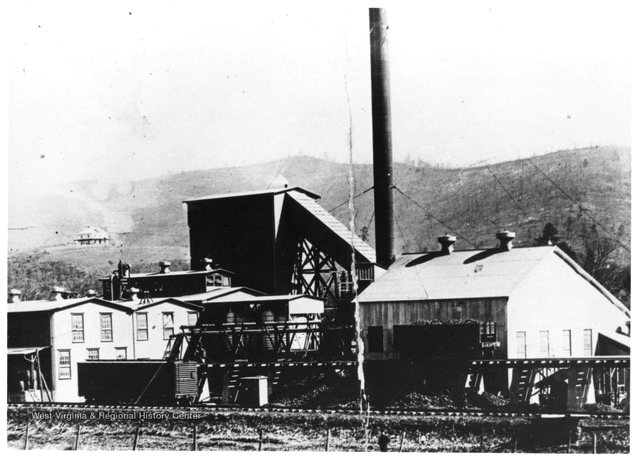Shown in this 1920 photograph is the Deer Creek Extract Plant near Cass in Pocahontas County. The plant was owned by West Virginia Pulp and Paper Company that operated one of the nation’s largest lumber mills in Cass and had extensive logging operations in the upper watershed of the Greenbrier River. Lumber from the mill was sold and shipped out by rail. Pulp wood was harvested and shipped to the company’s paper plant in Covington, Virginia. A by-product of the Cass operation was bark from the trees the company cut.
Tree bark, called tan-bark, is used in the tanning industry. Soaked in a solvent – usually water – the bark yields tannins. Animal skins are soaked in tannins that are united with proteins in the skins to produce a strong, flexible material we call leather. The West Virginia Pulp and Paper Company opened the Deer Creek tanning extract plant in 1914. As described by Bill McNell in Logging The Greenbrier Valley, the plant consisted of three large bark storage sheds, power house, chipping house, soaking tanks, and an autoclave building. The plant processed spruce, hemlock and some chestnut bark. Different barks have different levels of tannin in them which can affect the color and suppleness of the leather. Hemlock has 8-14% tannin whereas Chestnut bark has 30-40%. In his book, The Durbin Route, Bill McNell wrote, “During World War I, a considerable quantity of osage orange dye wood extract was produced in both liquid and powdered form to be used in the dyeing of khaki cloth, in place of fustic dye wood extract.” The Deer Creek plant likely supplied nearby tanneries in Frank and Marlinton. The plant closed in 1928, but the Greenbrier Valley had a viable tanning industry for many years afterwards.
Photo: Courtesy of the West Virginia University Regional History Center.
Sources: Logging The Greenbrier Valley and The Durbin Route by William Price McNell; University of California.



